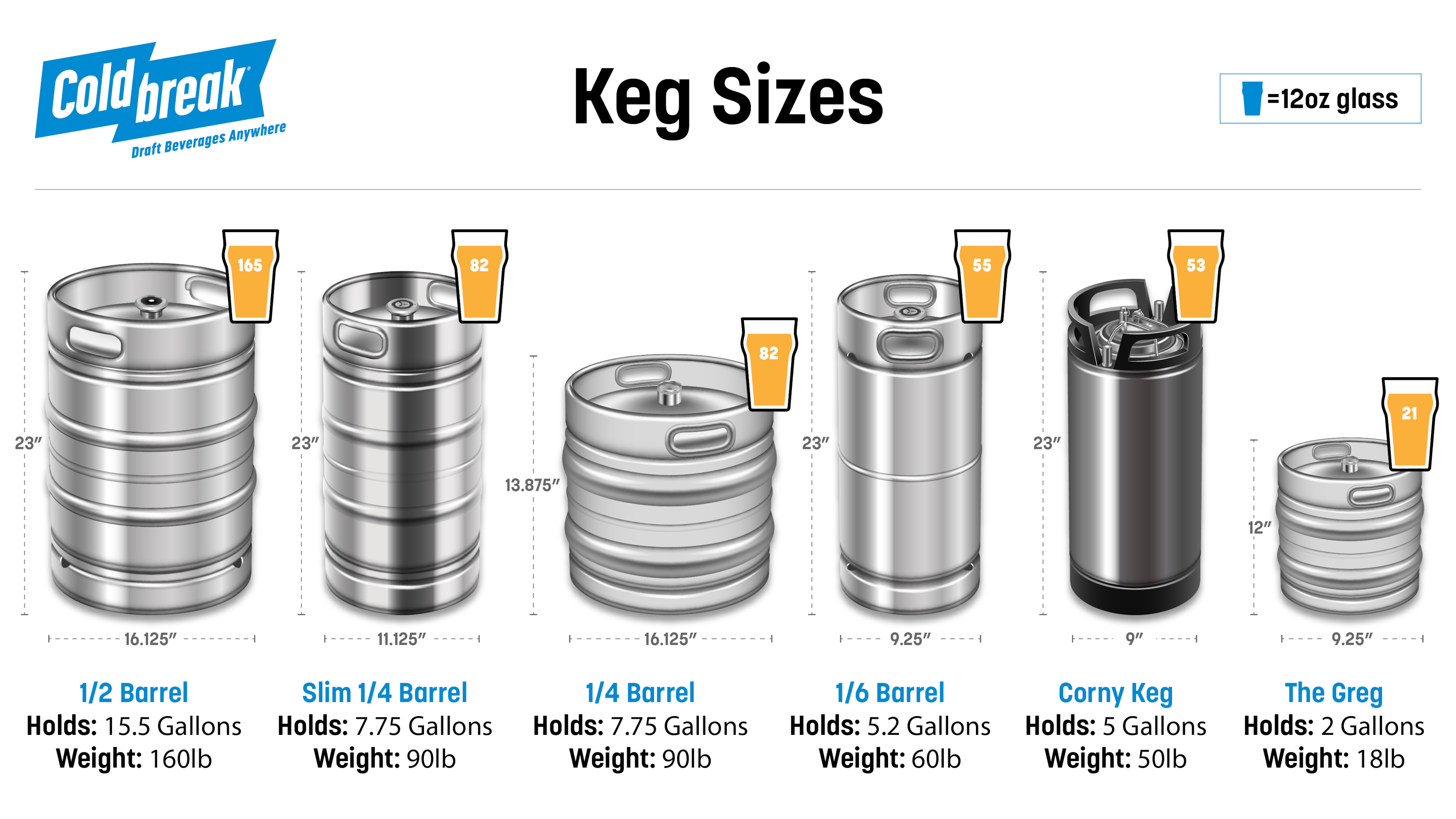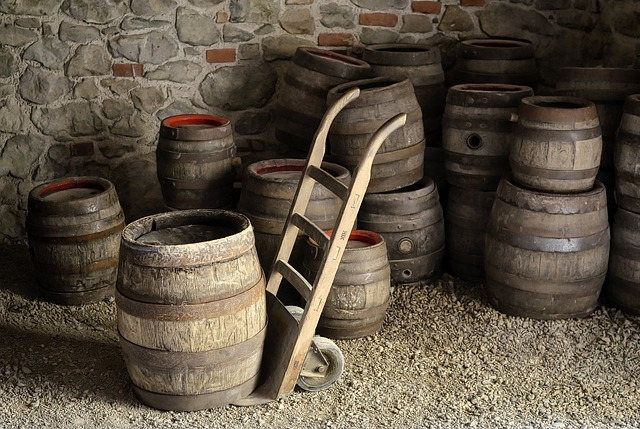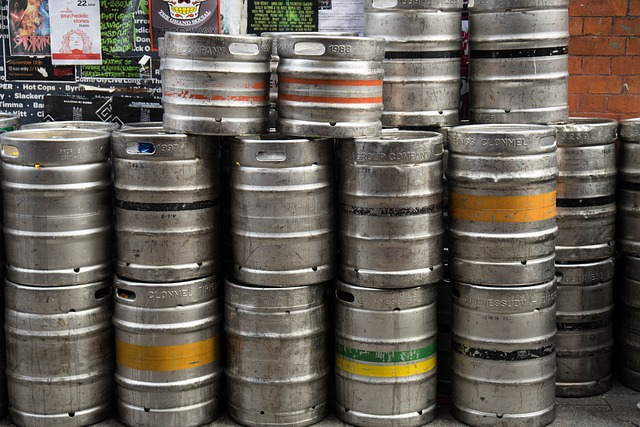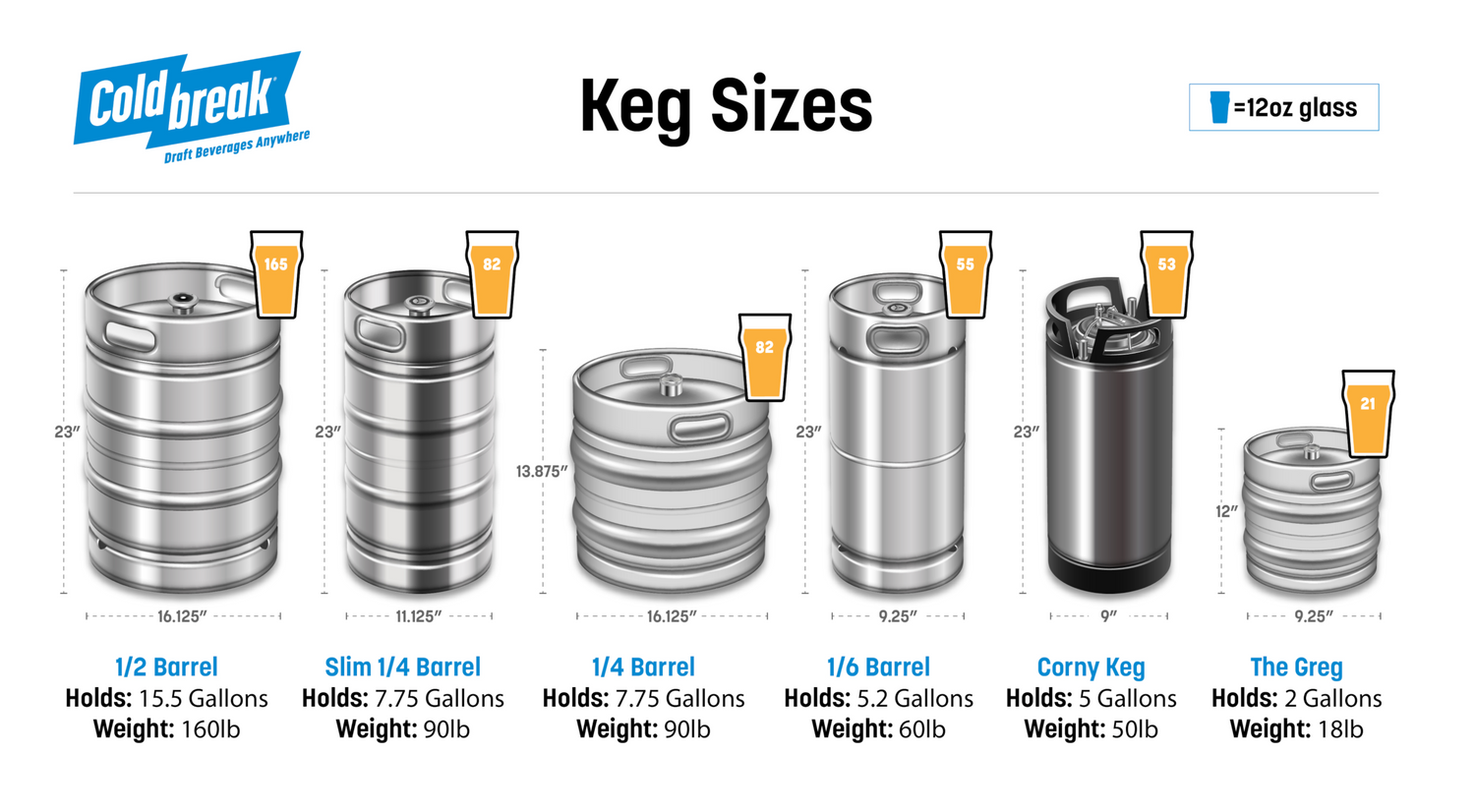Beer Keg Sizes: USA Keg Sizes and Their Measurement in Barrels
Delve into the world of beer brewing and dispensing. Learn about keg sizes, why they're measured in barrels, the pressure maintained in kegs, and the crucial coupler system.
In the USA, beer kegs are measured by the barrel—equal to 31 gallons. From busy bars to backyard parties, different keg sizes serve different needs. Understanding these sizes helps breweries, mobile bars, and beer enthusiasts pour more efficiently and avoid waste.

The smallest option is a two-gallon keg that pours about 21 twelve-ounce beers. It’s a practical choice for batching cocktails or small gatherings at home. With a threaded spear for easy filling and cleaning, it can be hooked up to draft lines, kegerators, or even party pumps, making it a versatile option for both indoor and outdoor use.
Cornelius kegs, often called “Corny” kegs, are especially popular with homebrewers. They hold about five gallons—roughly 53 twelve-ounce beers—and are designed with a removable lid for easy cleaning and filling. Corny kegs use ball lock or pin lock connections and can be paired with CO2 tanks for carbonating and serving, which makes them a favorite for those brewing their own beer.
For commercial and craft use, sixth barrel kegs, also known as sixtels, are common. Each holds just over five gallons, or about 55 twelve-ounce beers. Because of their smaller size, they are ideal for specialty and rotating craft beers that may not be consumed as quickly as mainstream options. Quarter barrel kegs, also called pony kegs, increase that capacity to 7.75 gallons, or about 82 twelve-ounce beers. They come in two versions: the short, wide style that is stable and easy to store, and the slim, tall style that saves floor space and fits better in residential kegerators.
The most recognizable option is the half barrel keg. At 15.5 gallons, it serves about 165 twelve-ounce beers and is the standard in most bars and restaurants. Despite the name, this is not a full barrel. In brewing terms, a full barrel is 31 gallons, so this size is considered a true half barrel. A full half barrel weighs close to 160 pounds when filled, making handling and storage a serious consideration.

The word “barrel” itself comes from the early days of brewing, when wooden casks were used to store and transport beer. Their round design made them durable and easy to roll, and coopers—specialized barrel makers—crafted them to be watertight. Over time, the barrel became more than just a container. It also became a unit of measurement. In the U.S., a barrel was eventually standardized at thirty-one gallons, primarily for tax purposes in the 19th century. While today’s beer is stored in stainless steel kegs, the term “barrel” remains in use.
Another important factor in keg systems is pressure. Most beer kegs are served at around 12 PSI when kept between 38 and 40 degrees Fahrenheit. This pressure strikes a balance between keeping the beer carbonated and ensuring it flows properly through draft lines. If the pressure is too low, beer will pour flat, while too much pressure can cause foamy over-carbonation. Certain beer styles, such as stouts or nitrogen-infused beers, may require adjustments. Mobile setups like jockey boxes often need further modifications, since they are typically unbalanced systems.

When deciding which keg size to use, consider the setting. Half barrels are the best option for large events and high-volume bars. Quarter barrels fit smaller venues or situations where variety is more important than volume. Sixth barrels are well-suited for craft and specialty beers, while Corny kegs remain the standard for homebrewers. Mini kegs and the Greg are excellent for at-home parties or experimenting with cocktails on tap.
By understanding how keg sizes work, you can choose the best option for your space, your beer, and your guests. Whether you’re running a brewery, managing a mobile bar, or simply planning a party, knowing the basics of keg sizes helps ensure great beer is always on tap.
Important side note: jockey boxes and mobile bars are typically unbalanced draft systems. These will require different PSI's for pouring beer, depending on your setup.


